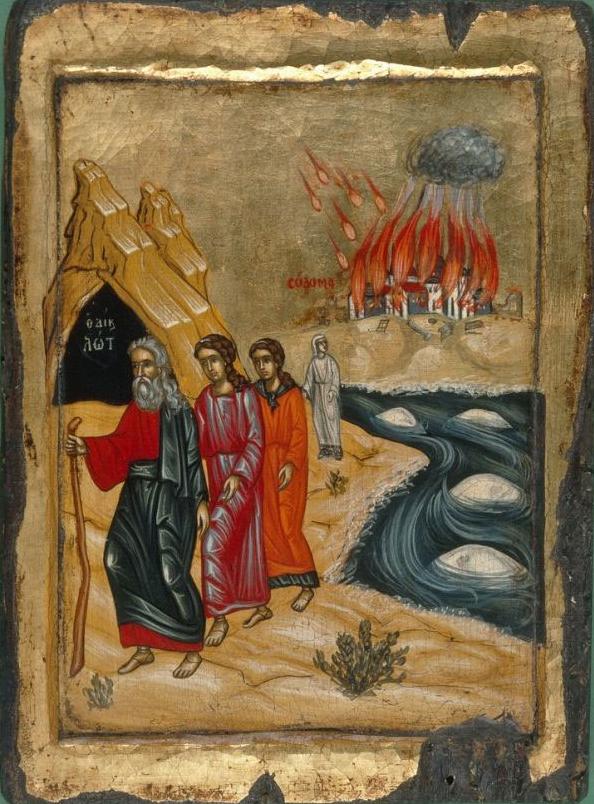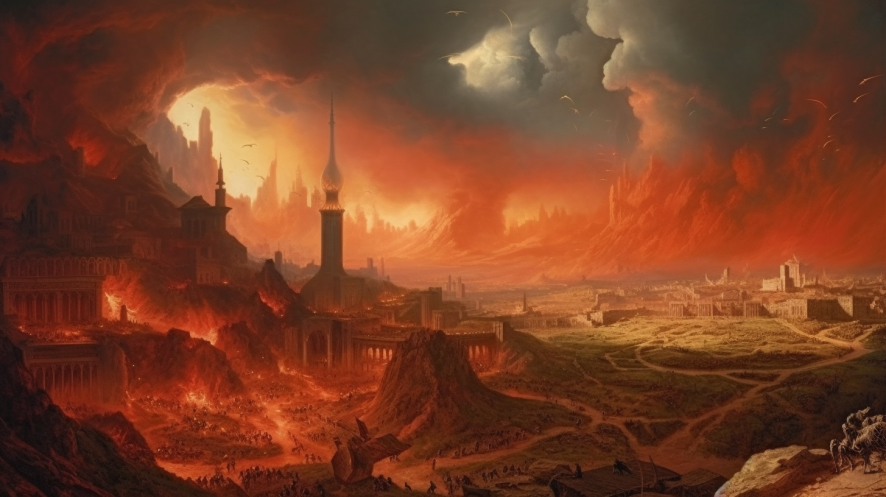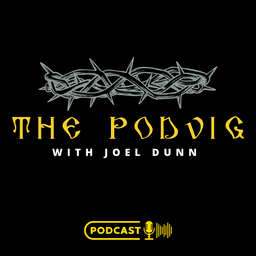Lessons from Sodom: Exploring Divine Judgment, Moral Decay, and the Search for Redemption
The biblical account of Sodom provides us with several lessons and wisdom that we can glean from its narrative. Here are a few key insights:
- Consequences of wickedness: The story of Sodom serves as a reminder of the effects of embracing vice and immorality. The city was notorious for its rampant sin and disregard for God's laws, leading to its eventual destruction.
- Divine judgment: The destruction of Sodom demonstrates the concept of divine judgment. God's righteousness and justice demand that wrongdoing be accounted for, and Sodom is a powerful example of God's response to unrepentant wickedness.
- The danger of societal corruption: Sodom's pervasive wickedness reflects the threat of societal breakdown. When a community engages in sinful behaviour and rejects moral values, it can lead to moral decay and destruction.
- The importance of righteousness: The contrasting figure of Lot, who lived in Sodom but maintained his character, emphasizes the importance of living a morally good life even in the face of societal pressure. In addition, Lot's story teaches us the value of remaining faithful to God's commandments and standing firm in our beliefs.
- God's mercy and justice: Despite the ultimate judgment on Sodom, the story also highlights God's mercy and justice. Abraham's plea for the righteous in the city reveals God's willingness to spare the wicked for the sake of the few honest individuals.
- The call to repentance: Sodom's story serves as a call to repentance and a reminder of the opportunity for redemption. It encourages individuals and societies to avoid sinful ways and seek forgiveness and transformation.

In Dodging Sodom, Joel Dunn writes the following poem;

It’s not what I’ve done but what I am that’s the problem.
If only actions stood condemned, my confession would be easy.
Here again, like fleshly kin, I fall, the sins betray You.
The seeds of death wrought deeds bereft of life beside You.
A mere equation, rote occasion, nothing more than dodging Sodom.
It’s not what I’ve done but what I am that’s the problem.
That deadly force, transgression's source, must lie without me.
If sin alone gets buried is it really necessary to die with You?
Shifting blame, that gifted same forbidden fruit still pains You.
Avoid detection, misdirection, nothing more than dodging Sodom.
It’s not what I’ve done but what I am that’s the problem.
Bodies splayed and broken, three arrayed on oaken graves at Calvary.
Survey the crowd, You cry aloud, forgiveness oozing from Your regal crown
Born to bleed; the nails, the spear, and death somehow become You.
No relenting, start repenting, something more than dodging Sodom.
It’s not what I’ve done but what I am that’s the problem.
The truth displayed in spittled rage erupting from me.
I looked within and saw my sins in torrents rush upon You.
A flood of guilt and silt and gall, desecrated flesh is all renewed in You.
What I am is not who I am, escape, and don't look back at Sodom.
The author explores the struggle between one's actions and inherent identity in this poem. The poet delves into the complex emotions and conflicts arising from this dichotomy. The recurrent refrain emphasizes that the problem lies not in what the speaker has done but in their essential nature. Through vivid imagery and metaphors, such as the reference to dodging Sodom, the poet highlights the ongoing battle to avoid the consequences of their actions.

The poet contemplates the relationship between sin, guilt, and the need for redemption. They question the necessity of their death by burying sin alone. The use of biblical imagery, particularly the reference to Calvary, adds depth and religious connotations to the poem. The broken bodies and the forgiveness flowing from the regal crown evoke the crucifixion of Christ and the redemptive power of his sacrifice.
The poet's introspection leads them to confront their sins and their impact on the higher power they address. They express a profound guilt, viewing their sins as a flood rushing upon the divine figure. The final lines suggest a desire for escape and a refusal to dwell on the past, symbolized by the warning not to look back at Sodom.
This poem explores personal identity, sin, and the search for redemption. The poet effectively employs vivid imagery and repetition to convey the internal struggles and emotions of the speaker.
— Daniel Sanderson
These lessons and wisdom from the story of Sodom offer valuable insights into the nature of righteousness, divine judgment, societal corruption, and the need for repentance and redemption. In addition, they guide us in navigating moral choices and understanding the consequences of our actions.

Daniel's Take:
Just as Sodom's wickedness led to its destruction, embracing vice and immorality in society can result in moral decay and societal breakdown. The contrasting figure of Lot emphasizes the importance of righteousness and living a morally good life despite societal pressure. God's mercy and justice, as seen in Abraham's plea, demonstrate the concept of divine judgment and the willingness to spare the wicked for the sake of the righteous. The call to repentance and the opportunity for redemption align with the philosophical idea of seeking transformation and pursuing the Good. Joel's poem explores the struggle between one's actions and inherent identity, reflecting on sin, guilt, and the need for redemption. Through vivid imagery and biblical references, the poet delves into the complexity of human nature and the ongoing battle to avoid the consequences of one's actions. These insights offer valuable guidance in understanding the nature of righteousness, divine judgment, societal corruption, and the quest for repentance and redemption in the context of Western philosophical thought.


